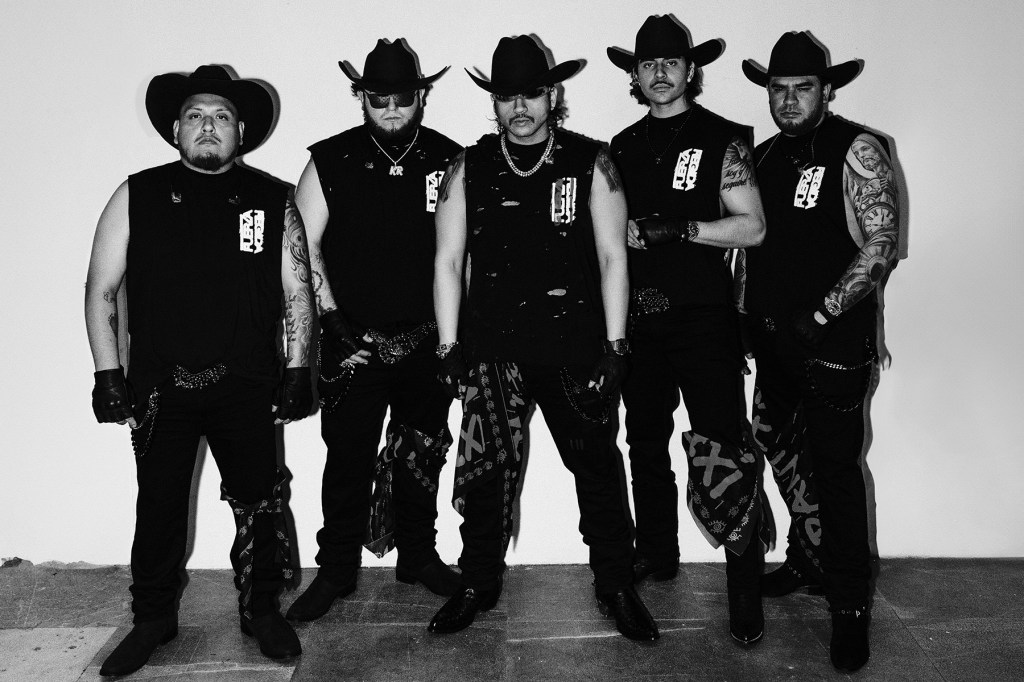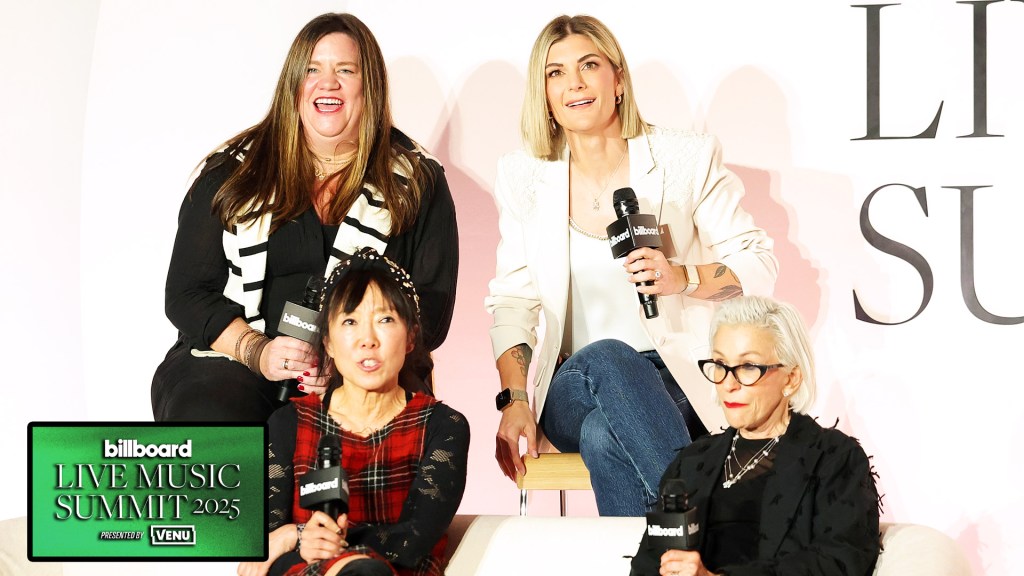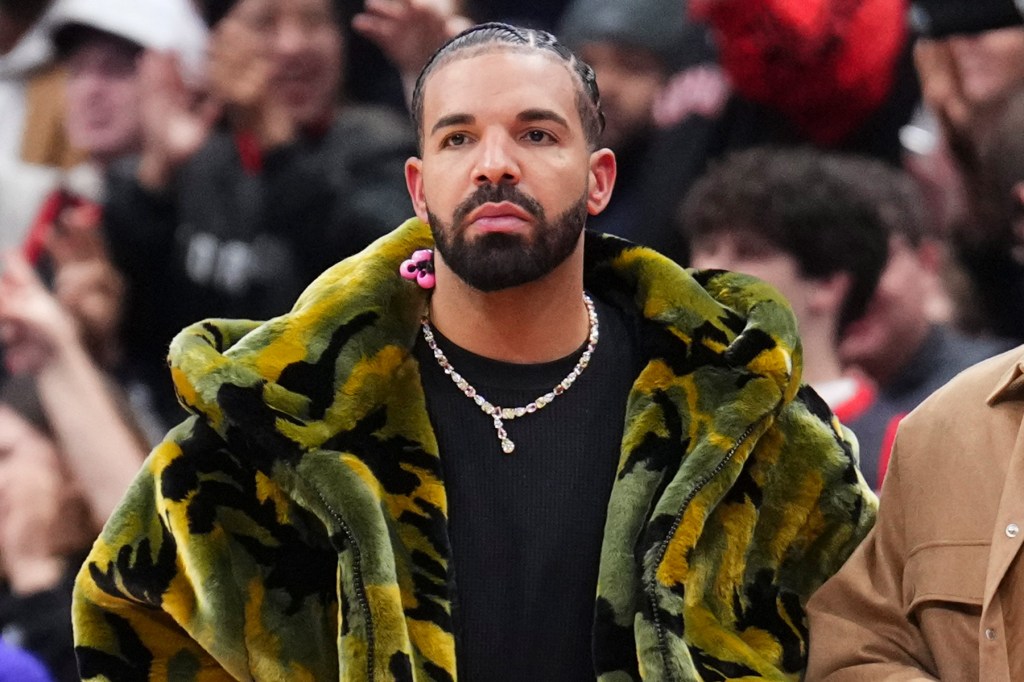Blog
Page: 150
Trending on Billboard
Fuerza Regida secures its fourth stint at No. 1 in 2025, as “Marlboro Rojo” surges from No. 6 to the top of Billboard’s Regional Mexican Airplay chart (dated Nov. 8). The group banks its seventh champ total.
“Marlboro Rojo” becomes the second chart-topper from the group’s ninth studio album, 111XPANTIA. Just four months ago, “Por Esos Ojos” led the list for one week in July.
As the sole writer of “Marlboro Rojo,” Miguel Armando Armenta, better known as Armenta, secures his sixth No. 1 on Regional Mexican Airplay chart as a writer. He previously penned five other chart-topping hits, contributing to the success of songs by Fuerza Regida and Gabito Ballesteros.
“Marlboro” takes the lead with 6.9 million audience impressions, earned in the United States in the week ending Oct. 30, according to Luminate. That’s a 31% boost from the previous week. As the track lands at the summit, Fuerza collects its seventh ruler dating to 2023 when “Bebe Dame,” with Grupo Frontera, earned the group its longest-leading No. 1 with three weeks in charge. Here’s a look at those champs:
Title, Artist, Peak, Weeks at No. 1“Bebe Dame,” with Grupo Frontera, March 18, 2023, three“Mentira No Es,” with Banda MS, July 29, 2023, one“Harley Quinn,” with Marshmello, Feb. 3, 2024, one“Tu Boda,” with Oscar Maydon, Feb. 1, 2025, one“Me Jalo,” with Grupo Frontera, April 5, 2025, one“Por Esos Ojos,” July 19, 2025, one“Marlboro Rojo,” Nov. 8, 2025, one
“Marlboro” shoots up the overall Latin Airplay chart, climbing from No. 15 to No. 3 and giving Fuerza its eighth top 10.

Trending on Billboard PinkPantheress was shocked after a fan gifted her a rotisserie chicken during a recent show in Chicago. The singer performed at Byline Bank Aragon Ballroom over the weekend, and during the show, she took a moment when she noticed a fan was carrying a full-blown rotisserie chicken. “Is that roast f—ing chicken […]

Trending on Billboard It’s the most wonderful time of the year! Yes, we officially have the all-clear from Mariah Carey to start celebrating the Christmas season — as messaged in her new Sephora commercial — but it’s a big week for music lovers for another reason: 2026 Grammy nominations will be announced on Friday. Sabrina […]
Trending on Billboard It increasingly feels like women have broken the agency space’s glass ceiling, yet women agents continue to face gender-specific challenges. In this panel, sponsored by Allegiant Stadium, four women whose careers are testaments to greater inclusivity in this sector – Jenna Adler (CAA), Marsha Vlasic (Independent Artist Group), Sara Williams (WME) and […]
Trending on Billboard As if losing a gut-wrenching Game 7 weren’t bad enough for Drake and the Toronto Blue Jays, the hits kept coming during the Los Angeles Dodgers’ World Series parade on Monday. Outfielder Kiké Hernández had some fun at Drake’s expense and took a playful shot at Drizzy when addressing the Dodger Stadium […]

Trending on Billboard
Ariana Grande is looking for some compassion after she was forced to cancel her trip to Brazil for the São Paulo premiere of Wicked: For Good, something she says has led upset fans to wish “danger” upon her and her team.
In a heartfelt Instagram Story post on Tuesday (Nov. 4), the pop star began by writing, “i can’t believe this is happening and i am beyond devastated to be sending this message.”
“a few hours ago, my team and i had to deplane our flight, as they had to do maintenance on the plane due to a safety issue and it will not be taking off until 11am tomorrow which means that i would not be making it in time for the Wicked For Good São Paulo premiere,” she continued. “i am so heartbroken that i’m unable to be there with you all. we sincerely tried everything we could and i apologize from the bottom of my heart.”
Grande also added in her message that she and her team had explored both commercial and private overnight flights that could get her to the event on time, but to no avail. Even so, some disappointed attendees apparently took their frustration out by wishing “danger” on the actress, who followed up with another post a few hours later.
“please don’t wish danger on us,” she pleaded. “we did everything we could and i promise you no one is more upset than i am … no matter how upset or disappointed you are, please please do not wish danger on us or assume that we didn’t try.”
The Grammy winner went on to explain that she hadn’t been able to fly to Brazil any sooner than what was planned, as she’d been filming a movie — Focker-in-Law — through Oct. 31 and had work engagements on the first and second days of November.
“i have been looking forward to this moment for a year,” she concluded. “i love Brazil, i always have, i always will.”
The event in São Paulo will mark the first official international premiere of the Wicked sequel, which hits theaters worldwide Nov. 21. The next major early screenings are set for Nov. 7 in Paris, Nov. 10 in London and Nov. 13 in Singapore.
The Wicked team also has a concert special in store for fans ahead of Part 2’s release, which comes almost exactly a year after the first movie premiered, setting box-office records. Featuring live performances of the musical’s score by Grande and co-leading lady Cynthia Erivo, Wicked: One Wonderful Night will arrive on NBC and Peacock on Nov. 6.
Trending on Billboard Kehlani celebrated a new career milestone when her R&B smash “Folded” reached No. 7 on the Billboard Hot 100 this week (chart dated Nov. 8). “First top 10 on Billboard. lucky #7 gratitude is endless,” they wrote on Instagram Monday (Nov. 3) prior to performing “Folded” on Jimmy Kimmel Live! that night. Following its […]
Trending on Billboard
Kehlani bags her first No. 1 on Billboard’s Hot R&B/Hip-Hop Songs chart as “Folded” snags the summit on the list dated Nov. 8. The single advances after five weeks in the runner-up spot and likewise captures the crown on the Hot R&B Songs list.
“Folded,” released on Atlantic Records, traces its coronation week on the multi-metric Hot R&B/Hip-Hop Songs chart to a combination of 13 million streams, 32.9 million in airplay audience and 3,000 sold in the United States for the tracking week of Oct. 24-30, according to Luminate, gains of 35%, 11% and 74%, respectively.
Streaming and sales improvements were aided by the release of the six-song “Homage Pack,” which remixed “Folded” with different R&B singers. The collection features individual remixes for the song with Brandy, Toni Braxton, JoJo, Mario, Ne-Yo and Tank, respectively. The first five versions all combine with the original “Folded” entry for charting and data purposes; the Tank edition, which recasts Kehlani’s vocals in a less-prominent way, is tracked separately. As the original “Folded” contributes most of the chart activity, no featured artists were added to the song’s billing.
Kehlani claims their first No. 1 on Hot R&B/Hip-Hop Songs with their 19th career appearance, stretching back to 2016’s “Gangsta,” which debuted at No. 20 in August 2016 and peaked at No. 13 the following month. That rank remained Kehlani’s best result until this year; in addition to the “Folded” rise, they came close to the top slot via a feature on Cardi B’s “Safe,” which peaked at No. 3 last month.
[embedded content]
Elsewhere, as “Folded” tops Hot R&B/Hip-Hop Songs, it repeats its rise from runner-up to top dog on the Hot R&B Songs chart, dethroning Leon Thomas’ “Mutt” on both rankings. It likewise is the Kehlani’s first No. 1 entry there; the singer-songwriter previously reached a No. 4 best via the Ty Dolla $ign-featuring “Nights Like This” in 2019 and the Tory Lanez-assisted “Can I” the next year.
In addition to its new crowns, “Folded” continues to unwrap new career milestones across other charts. This week, it becomes Kehlani’s first top 10 hit on the all-genre Billboard Hot 100, where it darts 14-7, and marks their first top 10 visit on both the Streaming Songs (28-10) and Radio Songs (11-8) charts.
Trending on Billboard
Chris Brown doubles up on Billboard’s R&B/Hip-Hop Airplay chart by occupying the top two spots of the radio ranking dated Nov. 8. The singer’s “It Depends,” featuring Bryson Tiller, rises 2-1, while former champ “Residuals” rebounds 3-2. With the pair, Brown pulls the double play for the third time in his career, and first instance since 2014.
“It Depends,” released on Brown’s CBE imprint and RCA Records, becomes Brown’s 12th No. 1 on R&B/Hip-Hop Airplay, tying Lil Wayne’s count for the third-most among all acts. Tiller, meanwhile, nabs his third champ after his two-week No. 1 “Don’t” in 2016 and via he and Rihanna’s featured spots on DJ Khaled’s “Wild Thoughts,” a five-week leader the following year.
“It Depends” ascends from the runner-up spot to rule R&B/Hip-Hop Airplay, which ranks songs by combined audience totals from panel-contributing adult R&B and mainstream R&B/hip-hop radio stations. There, the single jumped to 22.4 million audience impressions in the United States for the week of Oct. 24-30, according to Luminate, up 15% from the prior week’s total of 19.4 million. The nearly 3 million audience upsurge secures “It Depends” the Greatest Gainer award, given weekly to the song with the largest increase in audience.
Plus, Brown’s nine-week leader “Residuals,” which ruled at various times between February and August, rallies 3-2. In its 65th week on the chart, the single improved 6% to 20 million in audience for the tracking week.
[embedded content]
With “It Depends” and “Residuals,” Brown links a fifth occasion of appearing on the Nos. 1 and 2 songs on R&B/Hip-Hop Airplay. It’s the first time, however, he is the lead act on both tracks. He previously was on the top two titles simultaneously:
On the Nov. 25, 2006, chart with his own No. 1 “Say Goodbye,” and he and Johnta Austin’s features on the runner-up, Bow Wow’s “Shortie Like Mine.”
For three weeks of Nov. 15 – Nov. 29, 2014 charts via he, August Alsina, Future and Jeremih’s featured appearances on DJ Khaled’s No. 1 “Hold You Down” and his own No. 2, “New Flame,” featuring Usher and Rick Ross
Moreover, “It Depends” is Brown’s 12th No. 1 on R&B/Hip-Hop Airplay, tying Lil Wayne for the third-most among all artists since the chart began in April 1992. The pair trail only Drake (29) and Usher (16) on the leaderboard. As Brown makes it to a dozen leaders, here’s a review of the chart-topping collection:
“Say Goodbye,” six weeks at No. 1, beginning Oct. 14, 2006
“Deuces,” feat. Tyga and Kevin McCall; nine, Sept. 11, 2010
“Look at Me Now,” feat. Lil Wayne and Busta Rhymes; eight, April 2, 2011
“Loyal,” feat. Lil Wayne and French Montana or Too $hort or Tyga; eight, June 7, 2014
“New Flame,” feat. Usher and Rick Ross; four, Oct. 25, 2014
“Hold You Down,” DJ Khaled feat. Chris Brown, August Alsina, Future and Jeremih; five, Nov. 15, 2014
“All Eyes on You,” Meek Mill feat. Chris Brown and Nicki Minaj; one, Sept. 26, 2015
“No Guidance,” feat. Drake; 27, Aug. 24, 2019
“Go Crazy,” with Young Thug; 29, Aug. 22, 2020
“Under the Influence,” two, March 25, 2023
“Residuals,” nine, Feb. 15, 2025
“It Depends,” feat. Bryson Tiller; one (to date), Nov. 8, 2025
Elsewhere, “It Depends” lands a fifth week at No. 1 on the plays-based Mainstream R&B/Hip-Hop Airplay chart, where it improved 5% in plays for the week and repeats, at its No. 8 high, on Adult R&B Airplay (up 14% in plays). After three weeks atop the Rhythmic Airplay chart, the song surrenders the summit to Cardi B’s “Safe,” feat. Kehlani, and slides to No. 2 with a 5% decrease in plays.
Combined strength across formats is enough to advance “It Depends” 8-7 on the all-genre Radio Songs chart, where it added 10% in audience to reach 35.9 million in listenership for the tracking week.
Trending on Billboard
If anyone needs further proof that Adam Sandler‘s body of work transcends youth culture, AARP announced today that the actor, comedian and former Saturday Night Live cast member will receive its Movies for Grownups Career Achievement award at its annual ceremony on Jan. 10, 2026.
Explore
See latest videos, charts and news
Sandler, who won the organization’s Movies for Grownups Award for Best Actor in 2020 for his gripping performance in Uncut Gems, is generating awards buzz for his performance in Jay Kelly as movie star Kelly’s (George Clooney) devoted manager Ron Sukenick. He has already been nominated for an Outstanding Supporting Performance award at the 2025 Gotham Independent Film Awards, which take place Dec. 1.
The film, which opens in theaters on Nov. 14, screened at the Venice and New York Film Festivals, among others, and is receiving largely glowing reviews.
“We couldn’t be prouder to present this year’s Movies for Grownups Career Achievement Award to Adam Sandler, a Hollywood legend whose remarkable career has set a new standard for comedic storytelling, captivating audiences across generations,” said Myechia Minter-Jordan, CEO of AARP in a statement. “Adam’s enduring success, his ability to reinvent himself, inspire laughter, and move us through dramatic performances is a testament to the power of creativity at every age.”
The Movies for Grownups Awards, which originated in 2001, honors the most compelling film and television of the previous year that was created for the 50-plus audience. The ceremony will take place in Beverly Hills, Calif. and broadcast by Great Performances on PBS in February. Alan Cumming will host.
The AARP honor will join a long list of accolades for Sandler. He received the 2023 Mark Twain Prize for American Humor, has also earned three Grammy nominations, seven Primetime Emmy nominations, two Golden Globe nominations and a Screen Actors Guild Award nomination. He won the Independent Spirit Award for Best Male Lead for Uncut Gems (2019), and his performance in Hustle (2022) earned him a Critics Choice Award nomination.
His long-anticipated Happy Gilmore 2 — which co-starred Bad Bunny and featured a cameo by Eminem — also became Netflix’s most-watched U.S. film debut ever and the top opening for any Sandler movie on the service, with 46.7 million views in its first three days and 2.9 billion viewing minutes in its first week, according to Nielsen.

 State Champ Radio
State Champ Radio 






